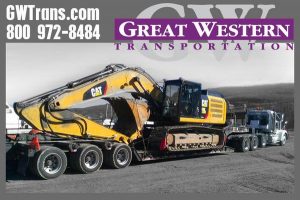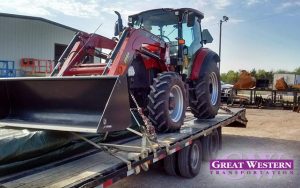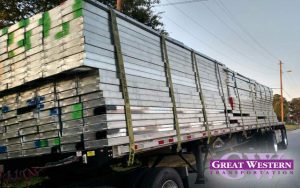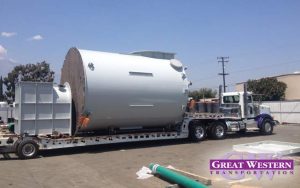Moving heavy machinery can feel like moving mountains so we’re here to give best practices.
Equipment World provided some very useful tips on effectively and safely transporting heavy machinery. With the most common violation being failing to secure vehicle equipment, there are many other mindful tasks to complete to ensure a safe delivery of these mechanical giants.
Before Loading
Making sure the equipment is securely anchored will prevent disasters from sudden stops and high speeds turns. Some best practices to adopt include:
- Check that your transport vehicle is rated to handle the heavy machinery’s gross weight
- Check if a permit is needed for the heavy machinery dealing with oversize or overwidth
- Make sure the weight distribution is equal on the transport vehicle and points of securement are viable
- Check the tire pressure of the heavy machinery if it has properly inflated rubber tires to guarantee that tie downs will not loosen

During Loading
Making sure the operator of the transport vehicle knows how to load and unload at the final destination. Other tips during loading include:
- Use attachment points that are best suited to provide a strong hold
- Use chain when necessary as they are best for heavy equipment and machinery
- Use some form of protection like edge protection to prevent damage to the tie downs or securement devices
- Follow the equipment manufacturer’s recommended attachment points to prevent damage to the equipment, hoses, or cylinders
- Wheeled vehicles need their own securement strategies like chocks, cradles, wedges, and other securement types
After Loading
After loading is complete, make sure to make a thorough inspection of all securement positions and check that the actual height and width fits with transportation standards.
- Locks and restraints should be used for any equipment that has any type of hinge to prevent damage during transit.
- If there are any accessories for the heavy machinery, make sure they are fastened properly or transported on another vehicle
Conclusion
Follow best practices and compliance standards will help save lives.
For transporting heavy machinery and other transporting needs, we invite you to visit us at our website!












